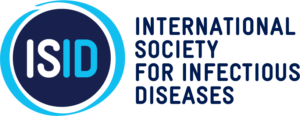From Concept to Practice: Infectious Diseases Prevention in the Health System
Preventive health services strive to decrease people’s risk of diseases, injuries, or disabilities. It also applies to individuals suffering from conditions, enabling them to manage them effectively and reducing the likelihood of complications or worsening. Approaches and activities aimed at reducing the likelihood that a disease or disorder will affect an individual, interrupting or slowing the disorder's progress, or reducing disability is how the World Health Organization (WHO) defines prevention. Preventative health measures to prevent illnesses before they arise include lifestyle counseling, asymptomatic disease tests, and vaccinations.
We may summarize the efficacious preventive methods here by applying the prevention concept to the agents for infectious diseases:
- Primary prevention involves strategies that prevent infections from spreading by eliminating infection-causing factors or building disease resistance. Prophylaxis, vaccination against infections, barrier from contact, and hygiene are a few examples.
- Secondary prevention refers to strategies for identifying and treating an illness before symptoms manifest. Examples include testing for STIs, TB, HIV, and other conditions.
- Tertiary prevention refers to strategies that focus on treatment and rehabilitation to lessen the adverse consequences of a symptomatic condition, such as death, disability, or spread to others. Sample HIV, hepatitis, and tuberculosis treatments.
- As defined by Ruth A. Etzel, Primordial prevention is “all population-level actions and measures that inhibit the emergence and establishment of risk factors” and includes any efforts to stop risk factors from developing in the first place, early in life, and even before conception. This could include controlling disease-carrying insects, including ticks, flies, and mosquitoes, and maintaining environmental hygiene. An established system for preventing and controlling infections and outbreaks related to healthcare is available through Prevention and Control (IPC) programs. Even while those programs are not developed, supported, and empowered equally throughout the world, and not even across healthcare institutions within the same country, the ongoing work on the operational plan for executing the global IPC strategy is quite promising.
At the Community level, the global population has been captivated by the COVID-19 pandemic, reinvigorating the idea that prevention is a more cost-effective approach to risk reduction, early detection, and outbreak, epidemic, and pandemic management. The relevance of taking environmental, animal, and human elements into account in parallel for the prevention and management of infectious diseases has been significantly elevated by the One Health (OH) approach’s recent evolution. An improved and more integrated approach is required in light of the persistent global expansion of food, water, and vector-borne illnesses.
To prevent infectious diseases in the future, there will be an increased need for coordination between the healthcare industry and other sectors in charge of delivering and/or overseeing critical services, including the local governments, the environment, and the food supply chain. Vaccination, environmental sanitation, vector control, urbanization control, safe sex stimulation, testing, treatment of STDs and other infections, promotion of good personal hygiene, food safety, and nutrition, fewer human-wildlife and livestock interactions, social inequality reduction, infectious disease surveillance, and preserving biodiversity are some of the most effective interventions. Given that every infectious illness has unique biological and ecological characteristics that impact distinct geographic areas, universally successful tactics must be adjusted and paired with targeted control and preventive measures. For the targeted community and demographic, the treatments should consider elements related to humans, the environment, animals, and pathogens comprehensively, all from the standpoint of One Health.
The organizational complexity of the current healthcare models and governmental structure makes integrating prevention into the healthcare system difficult. Preventive health, in general, has entered a recession despite cost-effectiveness studies and recognition of its economic effects due to the complexity that has arisen along the route. To create National Public Health Authorities and/or Institutions using the OH approach, functions previously housed in distinct organizational units are typically combined, occasionally with the addition of units or functions that were not previously part of the national government. Most NPHIs are derived from Ministries of Health units, which might not have explicit legal wording outlining their roles and responsibilities. Some originated at research institutes that are legally permitted, whereas others don’t. A legal framework outlining the NPHI’s mission and operations is crucial to establishing the clarity of governance, leadership, finances, and mission necessary for success, regardless of the organizations or parts of organizations that will undertake the preventive function at the national level. The process calls for the active involvement of numerous government agencies, important stakeholders, community representatives, the commercial sector, and—above all—the political will and dedication of the highest levels of leadership.
Providing worldwide direction, oversight, and assessment to local authorities will support and reinforce the need to create an all-encompassing, holistic OH system for preventive health. UN leadership in this area may begin with a high-level conference on One Preventive Health and a presentation of a quadripartite model for AMR. This will increase commitment to and attention to the need for preventive health at all levels, particularly among leaders and heads of state. Ultimately, there is a pressing need to incorporate preventive health and its components into the organization of national, international, and local health systems using an OH approach. This is especially true when considering how to develop resilient systems for the future and learn from the past.
As an ISID Emerging Leader, we are eager to see this advocacy take root and our scientific efforts to prevent novel and/or re-emerging infections put into perspective in line with the regulatory and organizational structure of the OH approach to prevent another devastating global spread of infectious hazards.
Written By ISID Emerging Leader, Dr. Amal Saif Al-Maani
